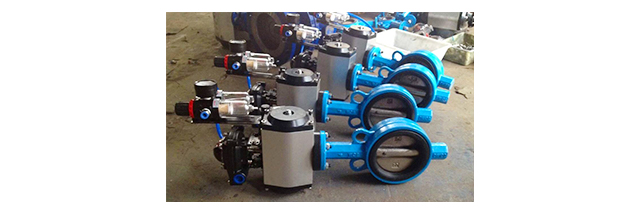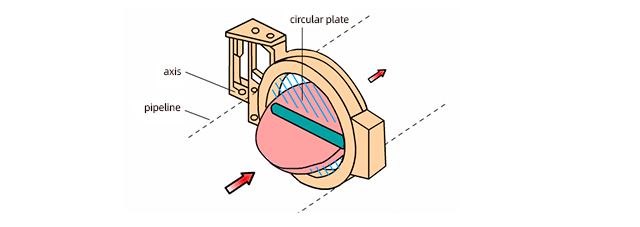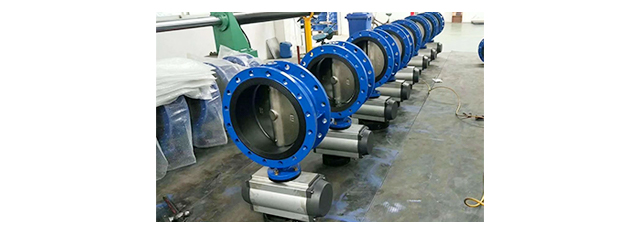- Gate valve
-
- DN1000 Extension stem double flange soft seal gate valveDIN F4 resilient seated gate valveDN450-1200 Resilient Seated Gate ValveDIN F5 resilient seated gate valveSocket connection soft seal gate valveUnderground cap soft seal gate valveBS5163 rising stem soft seal gate valveHard seal gate valveAPI slab Gate ValveStainless steel flange gate valveWafer knife gate valvePneumatic gate valveSoft seal gate valveExtension stem gate valveUL/FM fire protection groove ends gate valveRising stem forged steel gate valvecarbon steel gate valveStainless steel threaded gate valveDIN soft seal gate valveANSI soft sealing gate valve 200PSICast iron gate valveBS resilient seated gate valve
- Butterfly valve
-
- DN900 pneumatic triple eccentric hard seal butterfly valveD643H Triple Eccentric Butterfly ValveD343H Hard seal butterfly valveMulti standard EPDM seated butterfly valveSingle flange butterfly valveDN2000 Double eccentric butterfly valveFlange butterfly valveLug butterfly valveWafer butterfly valve with handleWorm gear operated butterfly valveWafer lined fluorine butterfly valveStainless steel wafer butterfly valveStainless steel flanged butterfly valveThree eccentric flange butterfly valvePneumatic flanged butterfly valvePneumatic wafer butterfly valveTriple eccentric butterfly valve wafer typeWafer butterfly valve ULC approvedInflatable seat butterfly valveHigh performance butterfly valveGrooved end butterfly valveElectric soft seal butterfly valveFlange fluorine lined butterfly valveHandle aluminum butterfly valveWorm Gear Aluminum Butterfly ValveFull PTFE lined butterfly valve wafer typeOne stem no-pin wafer butterfly valveMulti standard aluminum stem butterfly valveStainless Steel wafer Butterfly ValveAluminium handle operated lug butterfly valveLever Operated Flange Butterfly ValveButterfly valve stemButterfly valve discButterfly valve seat
- Ball valve
-
- DN1400 top-mounted eccentric semi-ball valveFlanged three-way ball valveFully welded ball valveNatural gas ball valveHigh platform flange ball valve1 PC ball valveFixed ball valvePTFE seat flanged ball valveMetal seat ball valveAPI 6D ball valve3 Piece ball valveFull Bore 3 way ball valve L-Port3 Way T-Port ball valve2PC Ball valve female thread stainless steel
- Globe Valve
-
- API Carbon Steel Globe ValveBellows Globe ValveStainless steel flange globe valveStainless steel thread S type globe valveStainless steel thread B type globe valveCast Steel Globe ValvePiston Globe ValveWCB Carbon Steel Globe Check Valveelectric motorized control stainless steel SS316 globe valveBrass Globe ValveCryogenic Globe valveHT200 Globe ValveThreaded Stainless Steel Globe ValveGG25 Globe ValveANSI API Cast Steel And Stainless Steel Globe valve
- Check valve
-
- Rubber seal check valveDN800 Slow closing check valveDN800 Rubber Disc Check ValveButterfly Buffering Check Valvecheck valve with counter weightSilent Check ValveWCB Swing check valveSwing Check ValveSingle Chip Check Valve H74WStainless Steel Wafer Check ValveSwing Start Check ValveFoot check valveAPI Swing Check ValveDIN Flange check valveSingle plate check valveLifting Check ValveBottom ValveHammer Diminish Noises Check ValveWafer Check ValveWafer dual plate check valve
- Control valve
-
- Static Balancing ValveCage Guided Sleeve Globe Control ValveDN1000 Piston Flow Regulating ValveDN1600 Electric Actuator Flow Regulating ValvePneumatic Flanged Butterfly ValvePneumatic Wafer Butterfly ValveAngle Seat ValvePneumatic gate valveElectric three-way control valveElectric sleeve control valve
- Water Meter
-
- Vertical Type Water MetersStainless steel threaded water meterPiston water meterPlastic water meterMore flow rotor dry water meterspiral vane flange water meterCI wotlman water meter with pulse outputLXCLG(R) Vertical removable element woltman cold (hot) water meterSingle flow rotor dry water meterPrepaid Token Water MeterElectromagnetic flowmeterRotary Piston Liquid Sealed Water MeterRotary Piston Liquid Sealed Water Meter
- Air valve
-
- Double ball exhaust valveDoubleair Air Valve SaudiDoubleair Air Valve Southeast AsiaDoubleair Air Valve South AmericaDouble Air ValveThreaded Air ValveSingle Air ValveTriple Functions Air ValveAutomatic Air Release ValveAutomatic release valveAutomatic exhaust valveComposite Exhaust Air ValveBrass exhaust valveDouble Ball Air Valve
- Pipe Repair & Coupling
-
- Flexible Multi-Function Pipe Coupling ZFJ-SSS Semi-Circle Pipe Repair Clamp SJW-HDuctile Iron Band Repair ClampStainless Steel Band Repair ClampDouble-Section Pipe Repair CouplingFolding Type Pipe RepairSingle-Section Multi-Function Pipe Coupling MF-SGear-Ring Type Multi-Function Pipe Coupling GR-SZBW Damping Corrugated Hose
- Dismantling Joint
-
- VSSJAFC(CC2F) Detachable Flange Transmission JointVSSJA-2(B2F) Double Flange Limited Expansion JointVSSJA-1(BF) Single Flange Limited Expansion JointVSSJA(AF) Flange Loose Expansion JointJGD-B Threaded Rubber JointZBW Damping Corrugated HoseKXT-S Flexible Dual-Spherical Rubber JointKXT Rubber Soft JointFlange Adaptor
Precautions for installing pneumatic butterfly valve
1. Before installation, check that all parts of the pneumatic butterfly valve are not missing and the model is correct. Check that there are no debris in the valve body and that there are no obstructions in the solenoid valve and silencer.
2. Place both valve and cylinder in closed position.
3. Install the cylinder onto the valve (the installation direction can be parallel or perpendicular to the valve body), and then check whether the screw holes are aligned. There will not be much deviation. If there is a slight deviation, just rotate the cylinder body a little. , and then tighten the screws.
4. After the installation is completed, debug the pneumatic butterfly valve (under normal circumstances, the air supply pressure is 0.4~0.6MPa). During debugging and operation, the solenoid valve must be opened and closed manually (manual operation can only be effective after the solenoid valve coil is de-energized). Observe the opening and closing of the pneumatic butterfly valve.
If during the debugging operation it is found that the valve has some difficulty in the initial opening and closing process, but then normalizes, the cylinder stroke needs to be adjusted smaller (turn the stroke adjustment screws at both ends of the cylinder a little inward at the same time, and the valve needs to be moved to the open position during adjustment) , then turn off the air source and adjust again) until the valve opens and closes smoothly and closes without leakage. It should also be noted that the adjustable muffler can adjust the opening and closing speed of the valve, but it cannot be adjusted too small, otherwise the valve may not operate.
5. The butterfly valve should be kept dry before installation and cannot be stored in the open air.
6. Before installing the butterfly valve, check the pipeline to ensure that there is no foreign matter such as welding slag in the pipeline.
7. The manual opening and closing resistance of the butterfly valve body is moderate, and the butterfly valve torque matches the selected actuator torque.
8. The specifications of the flange used for connecting the butterfly valve are correct, and the pipe clamp flange is consistent with the standard of the butterfly valve flange. It is recommended to use special flanges for butterfly valves, and flat welding flanges are not allowed.
9. Confirm that the flange is welded correctly. Do not weld the flange after the butterfly valve is installed to avoid burning the rubber parts.
10. The installed pipe flange must be aligned and aligned with the inserted butterfly valve.
11. Install all flange bolts and tighten them by hand. Make sure that the butterfly valve and flange are aligned, and then carefully open and close the butterfly valve to ensure flexible opening and closing.
12. Fully open the valve and use a wrench to tighten the bolts in diagonal order without washers. Do not overtighten the bolts to prevent severe deformation of the valve ring and excessive opening and closing torque.
Working principle of pneumatic butterfly valve
Pneumatic butterfly valve is a butterfly valve equipped with a pneumatic actuator to replace manual operation. Its working principle is to use compressed air as the power source to drive the valve stem to rotate, and the valve stem drives the disc-shaped butterfly plate to rotate. The initial position of the butterfly plate is determined according to actual needs. The butterfly plate rotates from the initial position. When the butterfly plate rotates When the butterfly valve is 90° with the valve body, the pneumatic butterfly valve is in a fully open state. When the butterfly valve rotates to 0° or 180° with the valve body, the pneumatic butterfly valve is in a closed state.
The pneumatic actuator of the pneumatic butterfly valve runs relatively fast and is rarely damaged due to jamming during the execution of the action. The pneumatic butterfly valve can be used as a cut-off valve, or it can be equipped with a valve positioner to realize the regulation and control of the medium in the pipeline.
In use, the pneumatic butterfly valve opens and closes the valve through the rotation of the butterfly plate, and is often used in large and medium-diameter pipelines.
1. The stainless steel pneumatic butterfly valve seals are replaceable, and the sealing is reliable and achieves two-way sealing.
2. The flange pneumatic butterfly valve is compact and simple, easy to disassemble and repair, and can be installed in any position.
3. The wafer pneumatic butterfly valve has a simple and compact structure, small operating torque, and quick opening with 90° rotation.
4. The connection between the disc and the valve stem of the soft-sealing pneumatic butterfly valve adopts a pinless structure, which eliminates possible internal leakage points.
5. The outer circle of the butterfly plate of the hard-sealed pneumatic butterfly valve adopts a spherical shape, which improves the sealing performance and prolongs the service life of the valve. It can still maintain zero leakage after opening and closing under pressure for more than 50,000 times.
6. The flow characteristics of the pneumatic butterfly valve tend to be linear and the adjustment function is good.
7. The butterfly plate of the pneumatic butterfly valve can be spray-coated according to user requirements, such as nylon or polytetrafluoroethylene.
8. Hard-sealing butterfly valves can be designed into flange connection and wafer connection.










